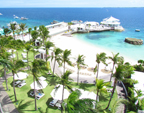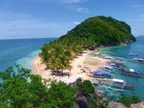- News Front Page
- Uncategorized
- Headline News
- Filipino Calgarian
- Business
- Pinoy Stories
- Community News
- Publisher's Note
- The Main Ingredient
- Views and Opinions
- Maikling Kwento
- Alberta News
- OFW – Month
- Travel News
- Health and Lifestyle
- Pinoy Toons
- Pinoy Spirit
- Entertainment
- The Philippine Lawyer
- Horoscope
- Greetings
- About Us
- Greetings From the Prime Minister
- Greetings from the President of the Philippines
- Greetings from the Premier of Alberta
- Greetings from the Mayor of Calgary
- Advertise With Us
- Disclaimer
- Subscription
Publisher's Note
- Publisher’s Note
 It was 22 years ago when I arrived in Canada and chose Calgary, Alberta to be my home. Leaving my family and friends behind, it was a new adventure for me to be in a new country without knowing anyone. That was the time I looked for a Filipino community paper and never found any, [...]
It was 22 years ago when I arrived in Canada and chose Calgary, Alberta to be my home. Leaving my family and friends behind, it was a new adventure for me to be in a new country without knowing anyone. That was the time I looked for a Filipino community paper and never found any, [...]
Visitors to Pinoytimes
Page added on April 22, 2017
Philippine Destinations for Your 2017 Getaways
Boracay is a small island in the central Philippines. It’s known for its resorts and beaches. Along the west coast, White Beach is backed by palm trees, bars and restaurants. On the east coast, strong winds make Bulabog Beach a hub for water sports. Nearby, the observation deck on Mount Luho offers panoramic views over the island. Offshore, coral reefs and shipwrecks are home to diverse marine life.
Bohol is a province of the Philippines, in the country’s Central Visayas region. It comprises Bohol Island and numerous smaller surrounding islands. Bohol is known for coral reefs and unusual geological formations, notably the Chocolate Hills. On the main island, near the town of Carmen, these 1,200 or so symmetrical mounds turn cocoa-brown in the dry season, contrasting with the surrounding jungle’s greenery.
Offshore from the southwestern capital, Tagbilaran, is Panglao Island. The island’s has beach resorts and renowned dive sites around south-coast Alona, as well as diving schools and opportunities for dolphin-watching. Inland, the forest of the Rajah Sikatuna Protected Landscape is popular for bird-watching and trekking. The Tarsier Sanctuary in Corella helps preserve the endangered Philippine tarsier, a tiny, bug-eyed primate. Wooden boats serve traditional buffets as they follow the Loboc River to Busay Falls. Around Antequera are caves and waterfalls.
El Nido is a Philippine municipality on Palawan island. It’s known for white-sand beaches, coral reefs and as the gateway to the Bacuit archipelago, a group of islands with steep karst cliffs. Miniloc Island is famed for the clear waters of its Small and Big lagoons. Nearby Shimizu Island has fish-filled waters. The area has many dive sites, including Dilumacad Island’s long tunnel leading to an underwater cavern.
The laid-back town of El Nido is a base for island-hopping tours, and kayaking trips to mountainous Cadlao Island, just across the bay. Taraw Peak can be reached by climbing steep, jagged cliffs for a bird’s-eye view of El Nido town and its horseshoe-shaped cove. North of town, the twin beaches of Nacpan and Calitang curve in opposite directions, featuring white sand and tall coconut palms. The cold waters of Nagkalit-kalit Falls are a popular swimming spot.
Cebu is a province of the Philippines, in the country’s Central Visayas region, comprising Cebu Island and more than 150 smaller surrounding islands and islets. Its prosperous port capital, Cebu City, retains landmarks from its 16th-century Spanish colonial past, including the Basilica Minore del Santo Niño church and triangular Fort San Pedro. Tops, an observation deck on Mt. Busay, has sweeping views over the city.
Cebu City is also a gateway to the region’s renowned dive sites and beach resorts. Throughout the province, divers and snorkelers can see whale sharks, turtles, hammerheads and rays among coral reefs, caves and steep walls. The west-coast town of Moalboal has several dive sites, modern resorts, nightlife in Panagsama and the sandy White Beach. Off the north coast of Cebu, tiny Malapascua Island has laid-back beaches and simple resorts, with renowned diving among thresher sharks offshore. Northwestern Bantayan Island focuses on beach life, centered around the village of Santa Fe.
Davao City, on the southern Philippine island of Mindanao, is a coastal commercial center near 2,954m-high Mount Apo, the country’s highest peak. In the city center, People’s Park is known for its colorful indigenous sculptures and lighted fountains. It’s also home to Durian Dome, named after the pungent, spiky fruit that grows in abundance on Mindanao. The Davao River cuts through the city.
Along the river banks are green spaces and the Davao Crocodile Park, a zoo with a variety of wildlife. Upriver are rapids for rafting. Elsewhere, the Philippine Eagle Center provides a rainforestlike home for the endangered giant raptors. Notable cultural institutions include the Museo Dabawenyo, exploring the region’s heritage, and the Davao Museum of History and Ethnography, focusing on the Mindanao tribes. The large Lon Wa Buddhist Temple is known for its statues and elaborate wood carvings. Samal Island, just off the coast, is a resort area with beaches and snorkeling.
Baguio, on the Philippines’ Luzon island, is a mountain town of universities and resorts. Called the “City of Pines,” it’s particularly popular in summer due to unusually cooler weather. At its center is Burnham Park, with gardens and a lake. Nearby, Baguio Cathedral, completed in 1936, has a rose-hued exterior. The main thoroughfare is Session Road, lined with shops, restaurants and entertainment options.
Former U.S. military facility Camp John Hay is a hillside holiday complex with a golf course and forest trails. The expansive Botanical Garden neighbors Wright Park, home of the picturesque Pool of Pines, and The Mansion, the presidential summer residence. Elsewhere, the BenCab Museum exhibits the work of Benedicto Cabrera and other Filipino artists amid landscaped grounds. Tam-Awan Village is an artists colony with traditional huts and views out to the South China Sea. Overlooking Baguio, 2,000m-high Mount Cabuyao has hiking and biking trails.
Vigan is a city in the Philippines, on the west coast of Luzon island. It’s known for its preserved Spanish colonial and Asian architecture. Calle Crisologo dominates the Mestizo district, with its cobblestone streets, malecón, horse-drawn carriages and rustic mansions. Near the white baroque Vigan Cathedral are Plaza Salcedo, offering fountain light shows, and Plaza Burgos, known for its street-food stalls.
Next to the cathedral, the 18th-century Archbishop’s Palace is distinguished by its sliding capiz windows. Inside the palace, the Museo Nueva Segovia contains religious relics from various churches in the region. Formerly the home of the Crisologos, a powerful political family, the Crisologo Museum displays personal memorabilia and period furnishings. A branch of the National Museum, Padre Burgos House features regional artifacts and artworks, including a series of paintings of the 1807 Basi Revolt against the Spanish.
Iloilo City, officially the City of Iloilo, is a highly urbanized city on southeastern tip of Panay island in the Philippines. It is the capital city of the province of Iloilo where it is geographically situated but governed administratively independent from it. In addition, it is the center of the Iloilo-Guimaras Metropolitan Area, as well as the regional center of the Western Visayas region. In the 2015 census, Iloilo City had a population of 447,992, with a 1.02% population annual growth rate. For the metropolitan area, the total population is 946,146. Iloilo City is bordered by the towns of Oton in the west, Pavia in the north, Leganes in the northeast and the Iloilo Strait in its eastern and southern coastline. The city was a conglomeration of former towns, which are now the geographical districts consisting of: Jaro, Molo, La Paz, Mandurriao, Villa Arevalo and Iloilo City Proper. The district of Lapuz, a former part of La Paz, was declared a separate district in 2008.
Sagada is a town in the Cordillera Mountains, within the Philippines’ Mountain Province. Echo Valley’s hanging coffins are displayed high on cliffs, while centuries-old coffins are stacked in burial sites like Lumiang Cave. The nearby Sumaguing Cave has unusual limestone formations. To the north, Bomod-ok Falls has a natural swimming pool. Rice terraces are carved into the area’s surrounding mountainsides.
Siargao is a tear-drop shaped island in the Philippine Sea situated 800 kilometers southeast of Manila in the province of Surigao del Norte. It has a land area of approximately 437 square kilometres. The east coast is relatively straight with one deep inlet, Port Pilar. The coastline is marked by a succession of reefs, small points and white, sandy beaches. The neighboring islands and islets have similar landforms. The island is composed of municipalities of Burgos, Dapa, Del Carmen, General Luna, San Benito, Pilar, San Isidro, Santa Monica and Socorro.
RELATED STORIES
LATEST HEADLINES
- ISKWELAHANG PILIPINO (IP) RONDALLA OF BOSTON WINS THE HEARTS OF CALGARIANS
- Pinay doctor joins Medicus Family Clinic and Pharmacy
- Multicultural Ethnic Media round table with Minister of Finance Joe Ceci together with Minister of Social Services Irfan Sabir
- Trans Mountain Pipeline keeps Canada working
- Facilitating travel to Canada while keeping Canadians safe
COMMUNITY NEWS
 A new way forward for some immigration application processing times
A new way forward for some immigration application processing times Calgary Stampede 2018 Poster
Calgary Stampede 2018 Poster Alberta celebrates first Philippine Heritage Month
Alberta celebrates first Philippine Heritage Month UPAAA Welcomes New Philippine Consul General
UPAAA Welcomes New Philippine Consul GeneralPINOY STORIES
 Duterte signs National ID System Act
Duterte signs National ID System Act- Holy Week practices in the Philippines
PINOY SPIRIT
HAVE YOUR SAY
Lorem ipsum dolor sit amet, consectetur adipiscing elit, dolor sit ipsum.PROMOTIONAL BLOCK
Lorem ipsum dolor sit amet, consectetur adipiscing elit, dolor sit ipsum.TRAVEL NEWS
PINOY TOONS
Tags
Archives



























